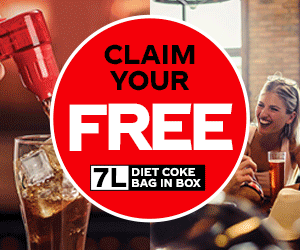Cider sales predicted to increase this year even if the sun fails to shine

CONVENTION decrees that cider is intrinsically linked with sunny summer weather; and while sales do rise in line with the mercury, cider is increasingly becoming a year-round favourite in Scotland’s pubs and bars.
Draught cider is a consistently strong performer – with the emergence of more craft brands also credited with contributing to the growth.
And these trends are expected to continue in the coming months, according to cider producers and distributors.
Rob Sandall, on-trade director at Thatchers Cider, said cider continues to perform particularly well in Scotland.
“Over the last year the category has grown by 4.4% in terms of volume,” he said.
“Draught cider grew even faster at 9.5%, both of which are above the growth rates at a total GB level.”
With the thirst for draught evident, Meriam Alnaman, senior marketing manager at Kopparberg, said licensees should aim to give it more bar space.
“The on-trade is holding up better in cider as a result of the fact that fruit cider and craft apple cider is increasingly available on draught,” she said.
“These draught variants are fast-becoming a premium second-tap option for many operators as consumers migrate away from a variety of categories that are increasingly being viewed as less exciting and continue to look for products that are authentic, more refreshing and tasty.”
With no sign of the demand for draught waning any time soon, Janette Murray, Magners UK marketing manager, said she too expects it to drive “sales and category growth in both volume and share” in the months ahead.
Just as the craft movement has changed some people’s perceptions about beer, a similar shift is said to be underway in the cider category.
Catherine McKeever, manager of Northern Ireland-based producer Long Meadow Cider, said that as consumers increasingly look for something new, it is benefitting smaller brands.
“Craft ciders are now holding their own as opposed to the big brands, we must move with demand,” she said.
Draught ciders are fast becoming a premium second-tap option for many operators.
Alnaman at Kopparberg echoed that view.
“Over the next 12 months, expect to see ‘craft’ propositions start to become viable contenders within the category,” she said.
“Consumers are increasingly becoming more discerning about the products they are purchasing and want to know and understand not only where their products are from, but what makes them unique.
“It is these points that have led to the rise of craft beer and cider and why ‘craft’ is something brewers can’t ignore.”
Draught and craft aren’t the only considerations when it comes to choosing a cider range, however.
Davy Uprichard, founder of Tempted Cider, said the emergence of fruit-flavoured variants has made its mark in the category, not least by helping to extend cider’s appeal throughout the year.
“There are very few people in the industry who think that cider is exclusively a summer drink,” he said.
“Fruit ciders have helped make cider a more accessible, year-round drink but there is still a job to do in ensuring autumn and winter perform as well as summer.”
In order to sell more cider, be it apple or fruit, throughout the year, visibility and marketing are key, according to Uprichard.
“Put simply, the most appropriate styles for summer should be visible then and the most appropriate styles for winter should be visible in the winter,” he said.
“We find our strawberry variety performs really well in winter along with our medium dry, which is ideal in mulled serves.”
Crispin Stephens, head of commercial planning and activation at Bacardi Brown-Forman Brands, which released Jack Daniel’s Tennessee Cider last year, underlined the importance of good visibility.
He said: “Position and visibility are key when looking to market a good selection of ciders to consumers.
“Point of sale displays, like bar runners, table tents and bottle holders, will have an impact on consumers’ choice as they approach the bar, placing the cider at front of mind when they are ordering.”
A smart approach to using social media can also help supplement cider sales, said Stephens.
Sam Nightingale, of the Nightingale Cider Company, agreed, saying it is crucial licensees promote their cider offer and the heritage and provenance of the brands they stock.
“The humble original apple cider should not be discounted when stocking,” said Nightingale.
“There is so much diversity in profile, style and flavour – from eastern-style clean, acidic and wine-like to the classic western-style tannic and full-bodied ciders.
“Shout out about supporting real cider – make sure CAMRA knows that you are a real cider destination, speak to your producers so that your team can educate customers, and run cider events through the year.”

























